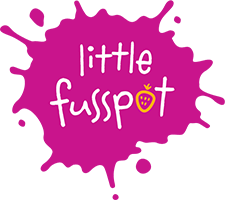The calcium conundrum.
With so many families choosing a moo free diet in favour of plant sources, can we be sure its at an advantage for our teeth and bones? We are so fortunate to have to hand a superhighway of information as to what we should be feeding our bubs, unfortunately this can sometimes mean that it contradicts or dispels important information, causing a child to be worse off.
What do our governments recommend?
Our Government’s advices infants under 3 years old should consume 500mg of calcium daily, but only recommends dairy sources as well as fortified soy milks. The problem with this is that it eliminates other sources but also is missing key information as to how to get calcium to be properly absorbed into the body for healthy teeth and bones. On average only 10% of calcium is being absorbed to where its needed in the body and the rest is getting up to all sorts of mischief like excreting iron and zinc and causing the digestive system to be sluggish.
What is so often overlooked is that without adequate storage of fat soluble vitamins A, D3 and K2 a child isn’t able to absorb calcium effectively and excretes it via the kidneys, stripping with it other essential minerals.
The importance of fat soluble vitamins
According to Dr Steven Lin who is a holistic dentist operating out of Sydney. When testing patients for a vitamin D deficiency “Vitamin D testing, in my opinion, is one of the most important measures we should be keeping an eye on. Because everyone is different and if you’re not getting a lot of direct sunlight, and even in the winter months, you simply don’t have enough. And when I started testing my patients, I found that nearly all were deficient and or it related to their dental disease. “
This is often overlooked, especially in countries that have less days of sunlight and is partly the cause of calcium sources only being absorbed by up to 10%.
Hundreds of years ago we didn’t eat dairy directly from the cow, it was fermented or turned into butter, cheese, yoghurt or kefir. We have so little vitamin K2 in our diet because modern-dairy freesia’s feed cattle grains and have very little access to sunlight and grass. A cow needs sunlight, K1 and vitamin A from grass to synthesise K2.
How do fat solable vitamins support calcium efficiency?
Dr Lin explains in basic terms that “Vitamin A, D, and K2, they all work together. We create a need in the body for Vitamin A when we ingest Vitamin D. And this was Price’s entire theory and observation with what he looked at in terms of the dietary aspect of dental growth. Was that these three vitamins worked together. And if you look in terms of, you know, going back to our calcium distribution problem, you can probably see Vitamin D as being kind of the material truck pulling up to a house construction site. And then vitamin A activates all the osteoclasts and the cells to turn over all the workers to bring the materials into the job. But then K2 activates…it’s kind of the water into the cement mixer. So without K2 we don’t activate the materials to actually put into the house. But you need all three together, and they’re work in this beautiful synergy all over the body. Vitamin A and Vitamin D activate genes, both with VDR receptor, but both interacting with each other as well. So, Vitamin D will activate a certain gene, but it will also depend on vitamin A as well”
So what happens to all that calcium being unused and excreted?
Over the past 5 years In my clinic, one of the biggest problems I see is the reliance on dairy as a life source without being warned of the side effects. Practitioners just aren’t clued up on the importance of other key minerals when it comes to calcium absorption and results in 90% of the calcium being excreted and becoming problematic mineral for infants to dispose of. So it therefore it binds to Iron and other trace minerals.
Below is some information on how to ensure your child is getting adequate intake of vitamin A, D and K2.
Calcium
- Cheese, milk and butter, choose grass fed sources and fermented sources where available also.
- Sardines and canned salmon (including bones)
- Beans and lentils
- Almonds (almond milk is a great dairy alternative)
- Leafy collard greens
- Figs
Vitamin A
- Eggs
- carrots
- sweet potatoes.
- winter squash
- cantaloupe (rock melon)
- apricots
- spinach, kale, and collard greens
Vitamin D
- Salmon (wild caught)
- Herring and Sardines
- Cod liver oil
- Canned Tuna
- Oysters
- Shrimp / prawns
- Egg yolks
- Mushrooms
Vitamin K2
- Grass fed cheese and butter (modern dairy freesia’s would have little vitamin K2 because you need sunlight, K1 and vitamin A from grass to synthesise K2)
- Liver
- Steak
- Organ meats like liver and kidney
- Kefir and sauerkraut
- Brie and gouda cheese
A slice of liver has a full spectrum of these vitamins so why not start mincing a little in spaghetti bolognaises or meatball recipes. Your Little Fusspot will hardly notice it.
To read the transcript from Fx medicine where Dr Lin goes into more depth into the topic click here
https://www.fxmedicine.com.au/content/dental-diet-dr-steven-lin
To get more information on the Little Fusspot online feeding therapies visit http://www.littlefusspot.com/

